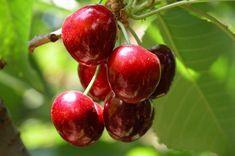
California stonefruit has already begun arriving in the UK, despite a late spring chill just two weeks ago.
Jim Culbertson, executive manager of the California Cherry Advisory Board (CCAB), said the first Bing cherries should be in the UK by the end of the month, with the harvest due to start next week.
“The Bing crop load is slightly less than last year, which will mean good fruit size,” Culbertson explained. “Our weather has been dry and cool for the past two months, and no forecast for any rain, so it looks like smooth sailing from here.”
Exports of the crop from the Golden State reached 110,206x18lb boxes in 2007 - the highest volume since the turn of the century. “We had a fantastic year in 2007 and intend to continue making exports a priority for the California cherry industry,” said Culbertson, adding that chill hours over the winter were “adequate”.
Neil Gordon, ceo of NMG Consulting, which handles Bing promotion in the UK for CCAB, has already begun lining up promotions with the multiples. “They are real crowd pullers at in-store displays,” he said, “and retailers like them because they are not particularly price sensitive and their taste and appearance provide an in-store attraction and extra profit.” NMG has also produced new leaflets to hand out at in-store tastings to encourage trial, handling, and recipe development, pictured.
Meanwhile, the California Tree Fruit Agreement (CTFA) has finalised its 2008 fresh peach, plum and nectarine estimates, and is forecasting total crop size of 56.6m packages; 23.8m for peaches, 11.6m for plums and 21.2m for nectarines.
Peaches and nectarines are expected to produce a similar crop to 2007, with the increase attributed to plums, as the better fruit set and better sizing potential are likely to boost volumes by 10 per cent on last season, even considering the frost at the end of April in Tulare county. Around a quarter of each the peach and nectarine crops will be white-flesh varieties. CTFA president Sheri Mierau said: “The outlook for the 2008 crop is positive, with adequate chilling hours this winter we can expect better flavor in the fruit.”



